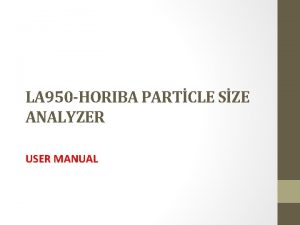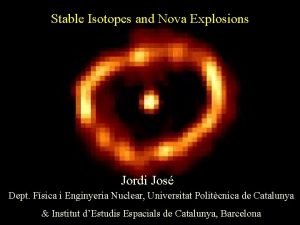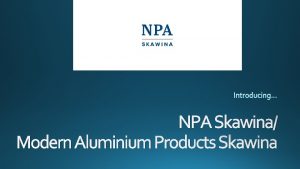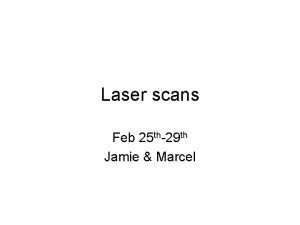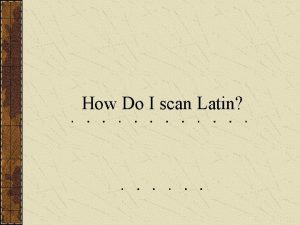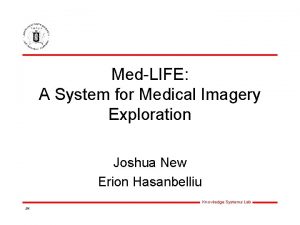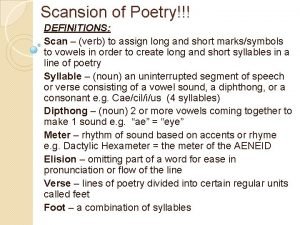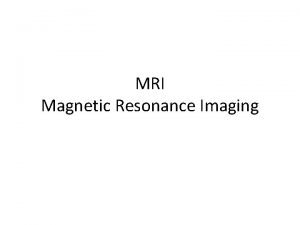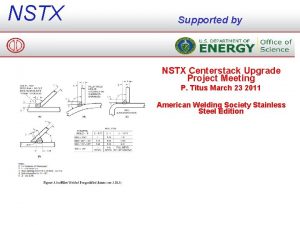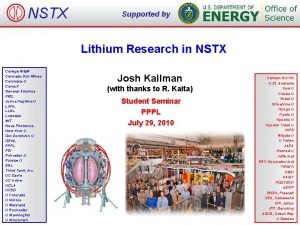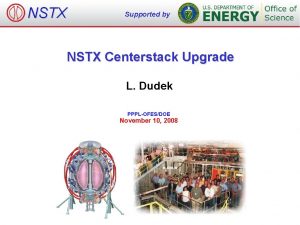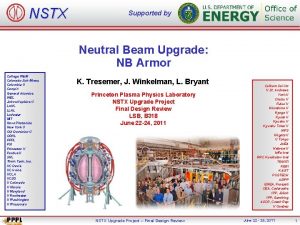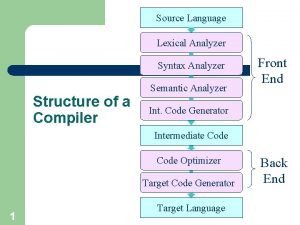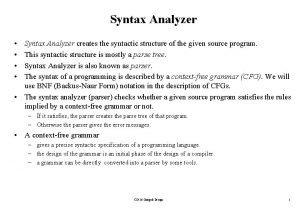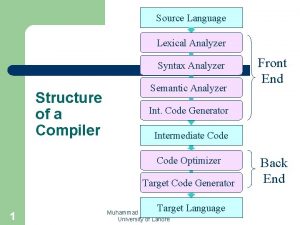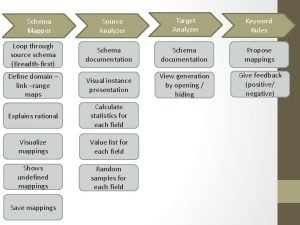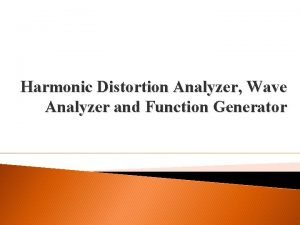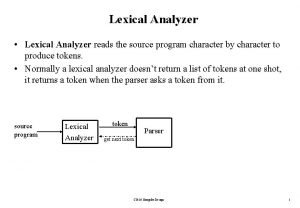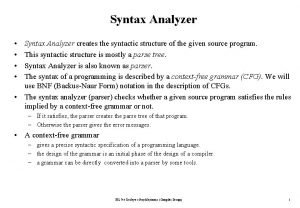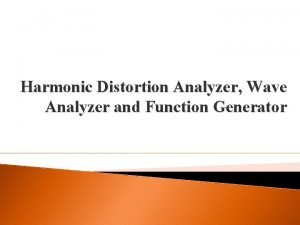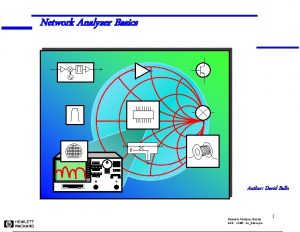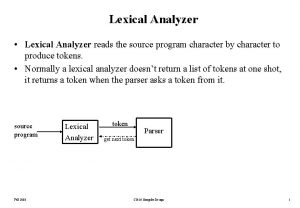The Neutral Particle Analyzer NPA on NSTX Scans



















- Slides: 19


The Neutral Particle Analyzer (NPA) on NSTX Scans Horizontally Over a Wide Range of Tangency Angles • Covers Thermal (0. 1 - 20 ke. V) and Energetic Ion (≤ 150 ke. V) Ranges 2

Slowing Down and Pitch Angle Scattering of NB Ions in Quiescent NSTX Plasmas is Consistent with Classical Behaviour Start of NBI • 40 msec later Perpendicular distribution for E ≤ Ecrit (~15 ke. V) fills in over ~40 msec (classical time: 50 msec) 3

TRANSP Simulations are in Reasonable Agreement with the NPA Horizontal Scans of NB Energetic Ion Spectra Start of NBI 40 msec later Absolute magnitude of measured and simulated NB flux agree to within ~ 5 x. 4

Various Mechanisms Produce Energetic Ion Losses Observed by the NPA Diagnostic • MHD Effects - Strong n=1 or n=2 mode activity and reconnection events [1] - Fishbones [2] • Plasma Opacity Effects - Outer gap width (i. e. plasma radius) - High density, broad ne(r) profiles • H-Mode Effects - MHD-induced ion loss is accelerated during H-mode operation due to high, broad density profile effects. [1] “Neutral Particle Analyzer Measurements of Ion Behavior in NSTX, ” S. S. Medley, et al. PPPL 3668 (February, 2002) [2] “Wave Driven Fast Ion Loss in the National Spherical Torus Experiment, ” E. D. Fredrickson , et al. Phys. Plasmas 10, 2852 (2003). 5

Illustration of “Ion Loss” due to Plasma Opacity Effects BT = 4. 8 k. G, IP = 0. 8 MA, Source B @ 100 ke. V, Low MCP Bias • Following H-Mode onset at 375 msec, the NPA spectra show significant loss of ions at all energies. 6

Discharge Parameters for SN 109067 BT = 4. 8 k. G, IP = 0. 8 MA, NPA RTAN ~ 75 cm, Low MCP Bias • For SN 109067 (loss at all E), source B @ 100 ke. V, PB = 2. 25 MW. • MHD n = 2 activity rolls over SNPA and SN prior to onset of the H-mode. 7

TRANSP Simulation of Energetic Ion Spectra and Neutron Measurements • TRANSP simulation agrees well with the NPA spectra and measured neutron rate. • “Ion loss” in this case is due solely to plasma opacity effects. 8

Illustration of MHD-induced Ion Loss during H-mode BT = 4. 8 k. G, IP = 0. 8 MA, Source A & B @ 90 ke. V, Low MCP Bias • Following H-Mode onset at 230 ms, the NPA spectra show significant loss of energetic ions only for E>Eb/2. 9

Discharge Parameters for SN 108730 BT = 4. 8 k. G, IP = 0. 8 MA, NPA RTAN ~ 70 cm, Low MCP Bias n=3 n=1 n=2 • For SN 108730 (loss at restricted E), sources A & B @ 90 ke. V, PB = 4. 2 MW. 10

TRANSP Simulation of Energetic Ion Spectra and Neutron Measurements for SN 108730 • In a quiescent plasma, good agreement is observed between TRANSP simulation and NPA spectra, but not during H-mode phase with MHD activity. 11

H-mode Ion Loss Decreases with Increasing NPA Rtan BT = 4. 8 k. G, IP = 0. 8 MA, Sources A & B @ 90 ke. V, Low MCP Bias • Increasing Rtan corresponds to the NPA viewing more passing ion orbits. 12

MHD-induced Ion Loss Decreases with Increasing NPA Tangency Radius, NB Energy and Toroidal Field NPA Rtan NB Energy • TRANSP calculations show that the trapped particle fraction viewed by the NPA decreases with increasing Rtan. • Reduced ion loss with increasing Rtan, ENB and BT is due to reduction of either the viewed or generated trapped ion fraction associated with MHD-induced ion loss. 13

MHD-induced Energetic Ion Is Not an H-mode Trigger • H-mode onset precedes or coincides with the decay of the NPA signal and neutron yield. 14

MHD-induced Energetic Ion Loss is Accelerated during H-mode Operation • At 2 nd NB turn-on, onset of low-n MHD activity causes a slow rolloff of the NPA signal, (Snpa), and the neutron yield, (Sn). • Subsequently, an H-mode at ~ 360 msec accelerates the MHDinduced ion loss observed on Snpa and Sndecays. • HYPOTHESIS: MHD-induced ion loss is accelerated during the Hmode due to an evolution of the q and beam deposition profiles which feeds trapped ions into the region of low-n MHD activity. 15

Evolution of Te, ne (and hence Pressure) Profiles during H-mode Drives other Profile Changes • Pressure profile evolution modifies Ip distribution, mainly by bootstrap driven current. • Density profile evolution increases full energy NB deposition in outboard region. 16

q-profile Evolution Introduces Low-n MHD activity: Elevated Trapped Ion Fraction Feeds Ion Loss. • Ip profile evolution modifies q profile, introducing q = 2. 5 region around r/a ~ 0. 63. • Out-shifted NB deposition increases full E trapped ions in m/n = 5/2 MHD active region. 17

Initial ORBIT Modeling Corroborates NPA Ion Loss Measurements • ORBIT modeling of SN 108730 uses TRANSP input and invokes n = 2, m = 4, 5 MHD activity with f = 20 k. Hz and a broad radial structure in the low shear region around q min at r/a ~ 0. 5. • Initial modeling treats passing particles, but comparable loss expected for trapped particles. • Particles launched from NB location along NPA sightline with v||/v = 0. 8 - 0. 9 are deemed lost if pitch angle perturbation exceeds +/- 0. 05 beyond this window. • Loss occurs for E>E/2 but not lower energies as observed in the NPA measurements. Courtesy N. N. Gorelenkov 18

Summary • During �H-modes, the NPA always observes significant ion loss at EEb≥/2 but seldom at lower energies. • Ion depletion only at higher energies is not consistent with attenuation due to simple plasma opacity effects with increasing ne(r). • The magnitude of the ion loss decreases with increasing neutral beam injection energy, toroidal field and tangency radius of the NPA sightline. Increasing values of these parameters reduces the fraction of trapped particles that is either generated or viewed by the NPA. • TRANSP modeling indicates that the effect is driven by the high, broad density profiles endemic to H-modes: i. e. a pressure-driven evolution of the q profile introduces low-n MHD activity whilst the beam deposition profile broadens to feed trapped ions into the MHD active region. This effect can also occur in high density L-mode discharges. • This MHD-induced energetic ion loss is not an H-mode trigger. 19
 Horiba la-950 manual
Horiba la-950 manual Virginia premier npa list
Virginia premier npa list New product initiative
New product initiative Mutcd npa
Mutcd npa Chapter 9 airway management
Chapter 9 airway management Npa classification chart
Npa classification chart Nurse practitioner association of new york state
Nurse practitioner association of new york state K.rcav
K.rcav Npa art and design
Npa art and design Jordi npa
Jordi npa Where is area code 506
Where is area code 506 Airway management ladder
Airway management ladder Npa skawina
Npa skawina Npa audit
Npa audit Bjof
Bjof Scans skills assessment
Scans skills assessment Daedalus and icarus scansion
Daedalus and icarus scansion Erion hasanbelliu
Erion hasanbelliu Elision scans
Elision scans Types of mri machines
Types of mri machines
